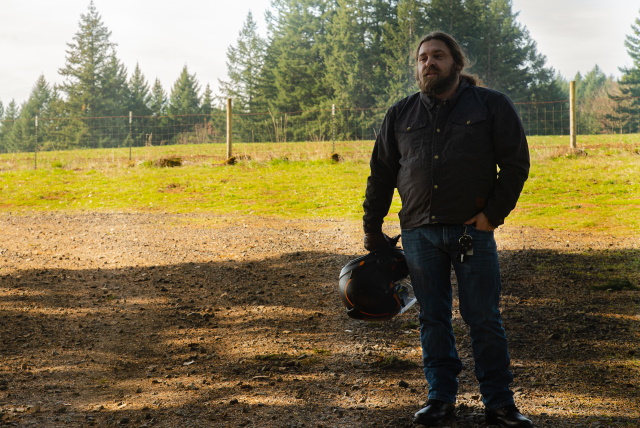
Poor guy.
You have probably uttered those words on occasion or two when riding or driving past a broken down motorist, stranded on the side of the road, probably clinging to their cell phone and with little hope of getting underway anytime soon.Some day that could be you.
Broke Down on the Side of the Road
Well, what do you do in the event your motorcycle loses power and sends you off on a slow crawl to the side of the road with nary a gas station or even a sign of civilization in sight? First off, it helps to understand the likely culprits that leave most motorcyclists stranded so you hopefully take a course of action before heading out. But misadventures happen therefore it also makes sense to know how to handle problems in the event you end up on the side of the road, clutching a cell phone, watching traffic pass.
Flat Tire
The perpetrators of flat tires do not discriminate between car and motorcycle. Any rubber tire that rolls across the pavement has a target on its tread and when punctured results in a slow leak or blow-out. But, unlike a car, a motorcycle has no room for a spare tire so you need a tire repair kit.
You will more likely discover a small leak the "next morning," if you will, and most tire repair kits safely and securely plug the hole, without the need to dismount the tire, allowing you to ride without further issue. Some kits include Co2 cartridges to allow for inflation. You should replace the tire, however, as soon as possible. When traveling you might spend an extra hour or two in the hotel parking lot while you take the time to fix the leak but not on the side of the road.
A blow-out on the freeway poses another issue. This usually results in significant damage to the tire that even a professional cannot fix. Bottom line, you need a new tire. Therefore, subscribe to some type of roadside assistance and carry a charged cell phone on your travels. Your ride day might be over but at least you can get home.
Dead Battery
A dead battery won't conk the bike out mid-ride but little else pops the excitement bubble for the day when the engine fails to turn over. You can always bump start the motorcycle assuming you know how and can get the bike up to speed for the method to work. Read "How To Bump Start a Dirt Bike" (which applies to motorcycles).
Once started, you can ride without issue and after 30 minutes or so the battery recharges if the drain came from a light left on or something similar. An old battery might never hold a charge and needs replacing.
If you can't bump start the bike, call roadside assistance or, if nearby, grab a new battery from a local auto parts store. Most roadside assistance like AAA and auto parts stores can test the dead battery to determine its viability.
Broken Chain
You might need a new pair of shorts if the chain ever breaks while cruising down the highway but forget the abrupt, loud snapping of the drive chain, because you need to gather your bearings and get the quickly decelerating motorcycle to the side of the road.
Most riders generally do not carry around an extra chain in the event of a break. A pre-ride check that consists of inspecting the chain for wear usually prevents a disaster on the road. But sometimes, the chain snaps from road debris or just because. If this happens call roadside assistance or get ready for a long walk.
Broken Throttle Cable
The motorcycle will also lose power quickly if the throttle cable breaks. A snapped cable obviously prevents the throttle from working but so does a stretched cable that no longer has the proper tension to fuel the bike. Call roadside assistance for a pick-up and drop off at the nearest mechanic.
Broken Clutch Cable
Like the throttle, the clutch cable can break or stretch leaving you unable to shift the motorcycle. This occurs far less than a broken cable throttle. Unlike the throttle cable though, you can continue riding but probably not at freeway speed. Therefore, stay in the gear you were riding when the cable broke or "dry shift" which is shifting without using the clutch. This takes some practice and those who have mastered shifting without the clutch often ride normally without ever using the clutch to shift.
To shift without the clutch, get the engine RPMs higher than when normally using the clutch, back off on the gas and as the bike slows and the RPMs drop a small window of opportunity opens allowing you to shift up or down a gear without holding in the clutch. If done wrong repeatedly you can damage the transmission.
Empty Gas Tank
Don't laugh. It happens especially since so many motorcycles have unreliable gas gauges. But you can easily prevent this by knowing how many miles to travel between fuel stops. If you have partnered with your bike for some time you probably have a pretty good idea but if you have never taken a long ride or have a new machine under your legs, keep an eye on the miles ridden. Again, roadside assistance can help you out in a pinch otherwise walk to the nearest gas station.
A machine with so many moving parts can break down for many reasons but we have listed the most common. Routine maintenance and conducting a pre-ride check helps prevent a lot of roadside failures, aggravation and lost time.






